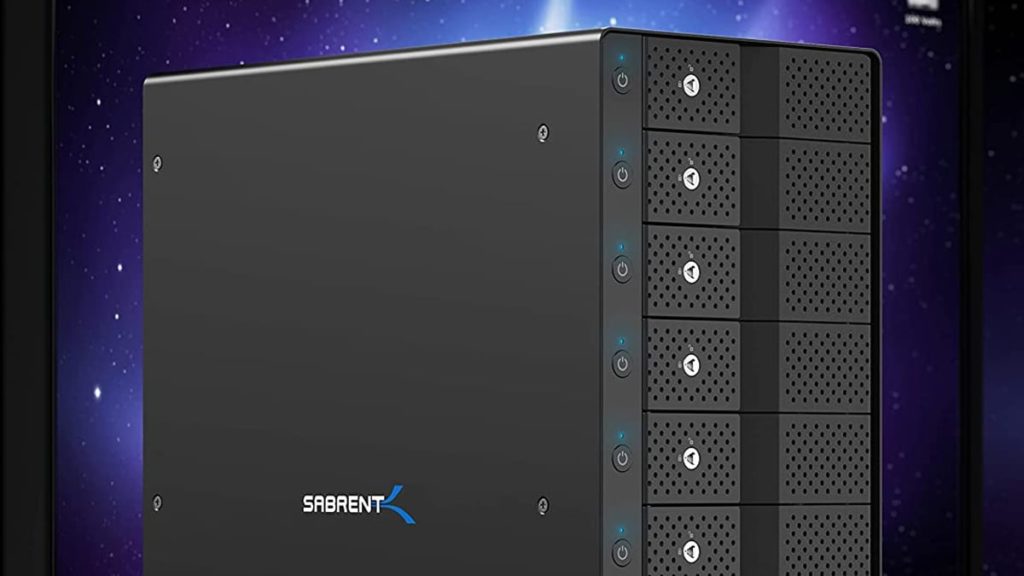
Looking for a quick way of adding vast amounts of additional storage to your system without going through the trouble of building a separate server? A new option has surfaced in the form of the DS-UCTB, a new docking station from storage and peripheral maker Sabrent that towers over its existing options. Users will find not 4, not 5, but 10 bays on the new DS-UCTB, all of which feature a tray-less design for convenience and can be individually switched on/off via power buttons at the front of the unit. Cooling is assisted with a pair of 120 mm fans in the back, while USB 3.2 Gen 2 Type-C connectivity enables speeds of up to 10 Gbps. Sabrent’s DS-UCTB docking station is available now at Amazon for $599.99.
Sabrent DS-UCTB Features:
- USB 3.2 Gen2 Type-C port supports transfer speeds of up to 10 Gbps.
- 10 x SATA 6 Gbit/s 3.5″ hard drive tray-less bays.
- High-quality aluminum for optimal heat dissipation and structural integrity.
- Hot-Swappable with 10 independent ON/OFF power switches.
- Locking key to prevent accidental bay opening, fully tray-less design.
- Two 120mm fans for additional cooling capability.
- Built-in Kensington security slot.
- Main ON/OFF power switch.
- NOTE: This multi-bay station does NOT have built in RAID functionality. However, software RAID configurations are possible.
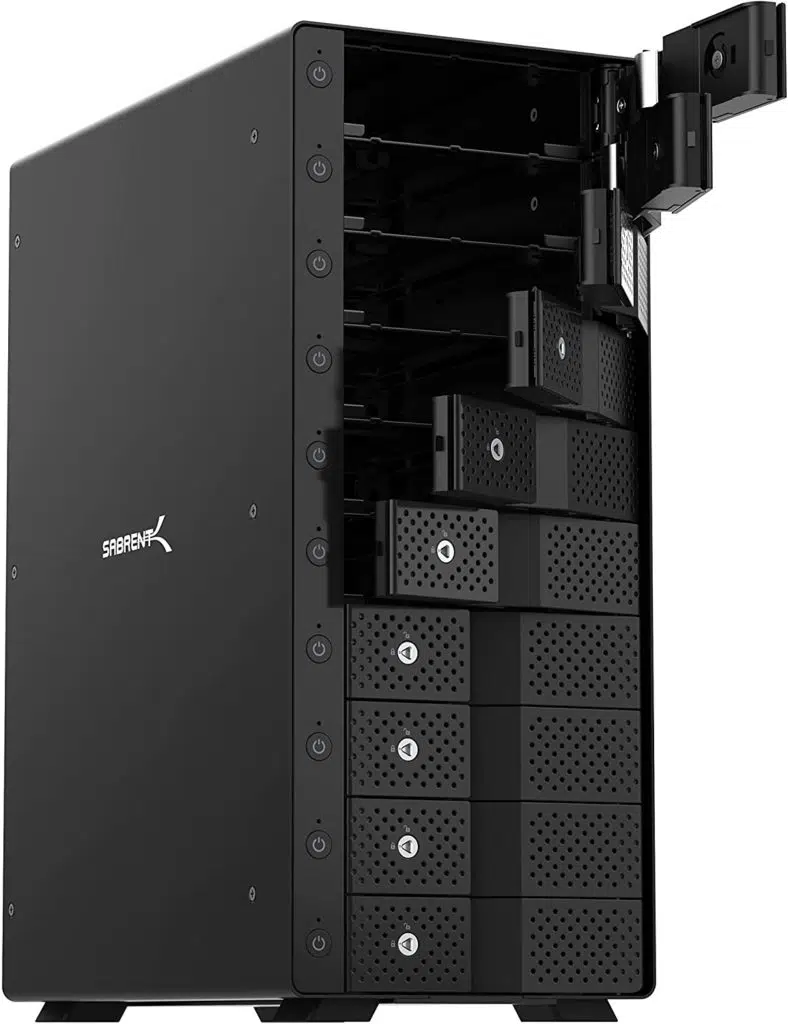
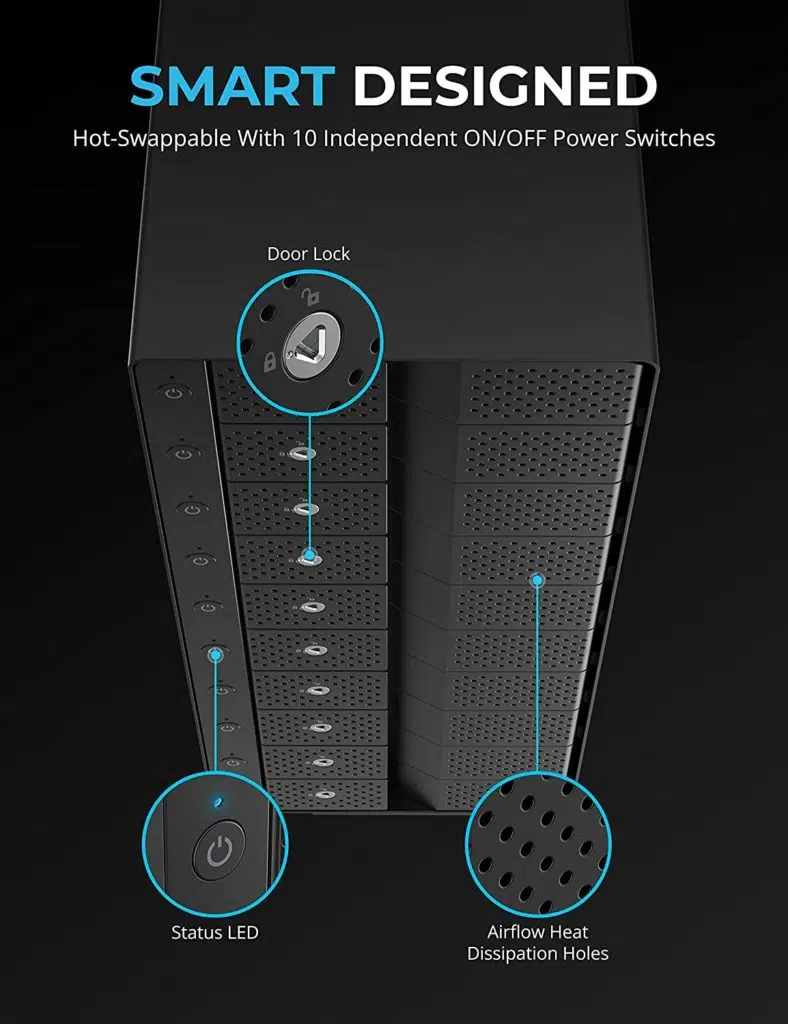
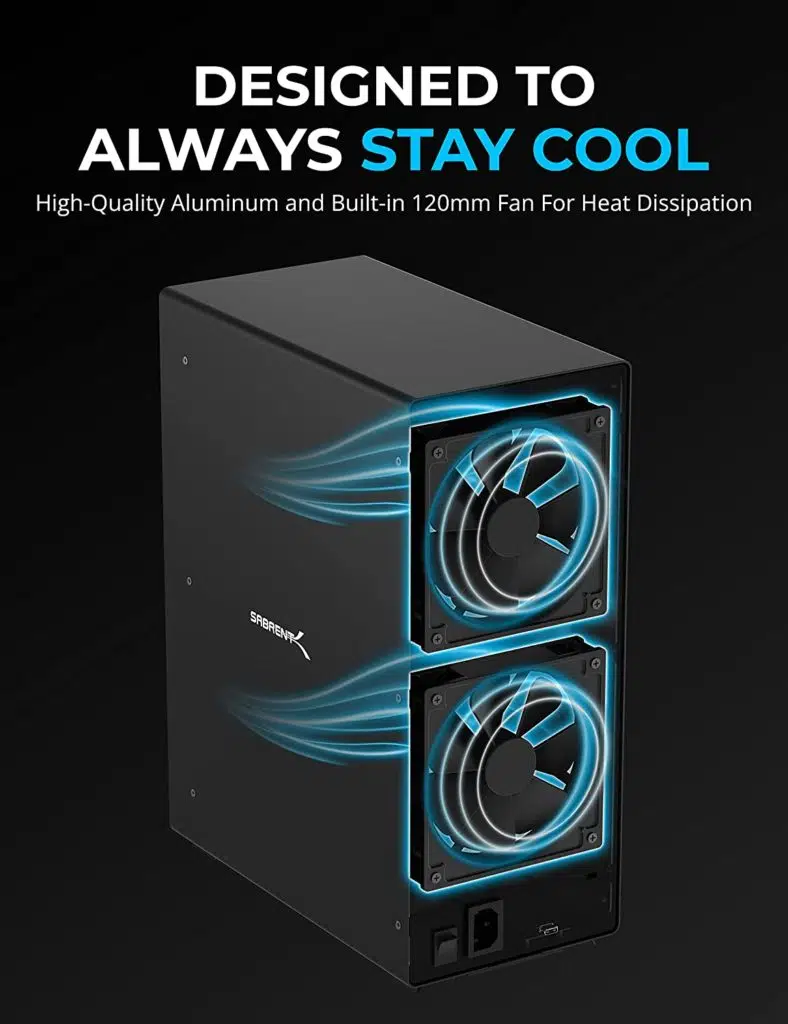
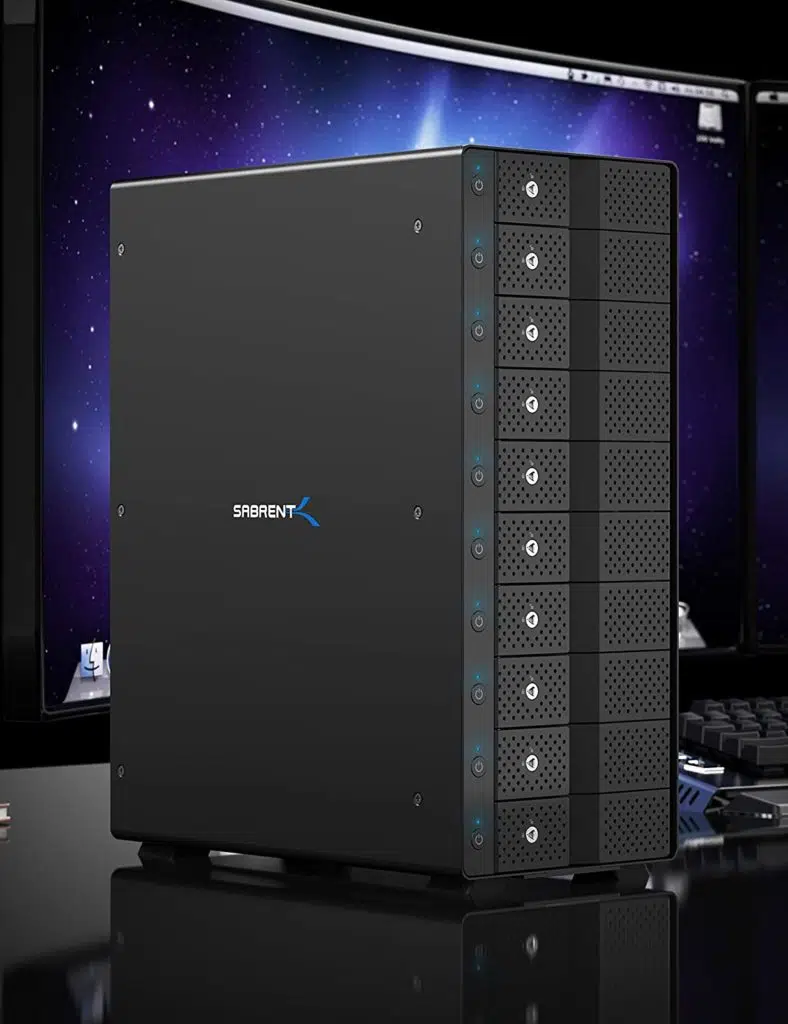
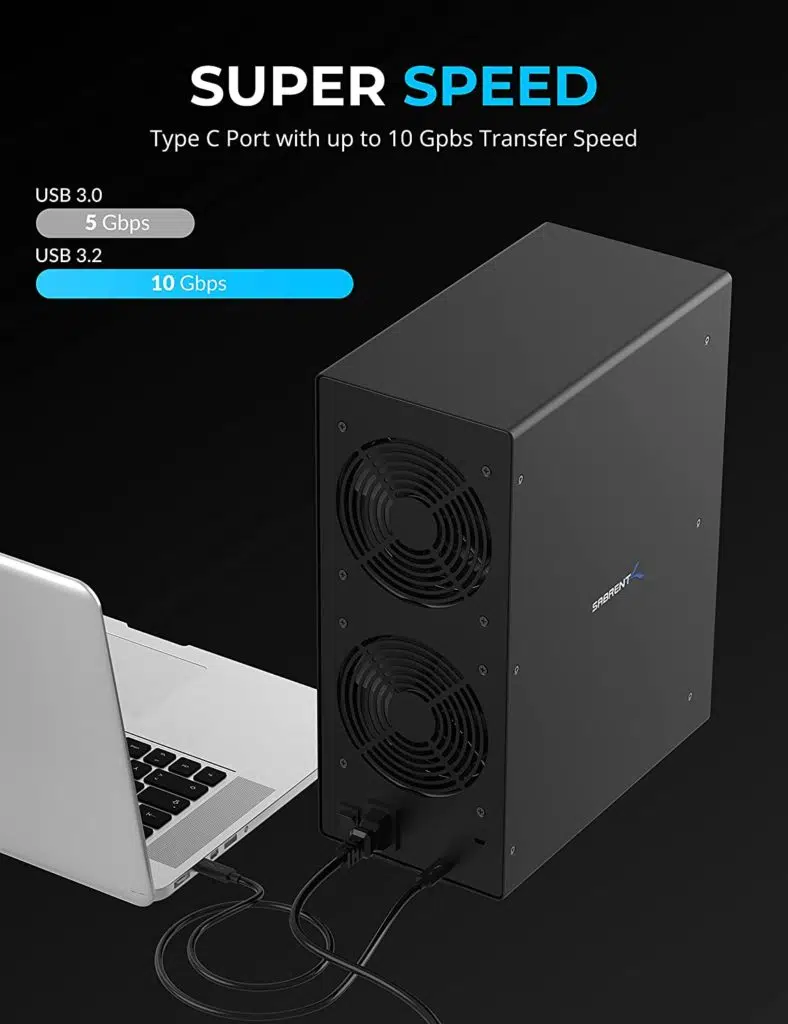
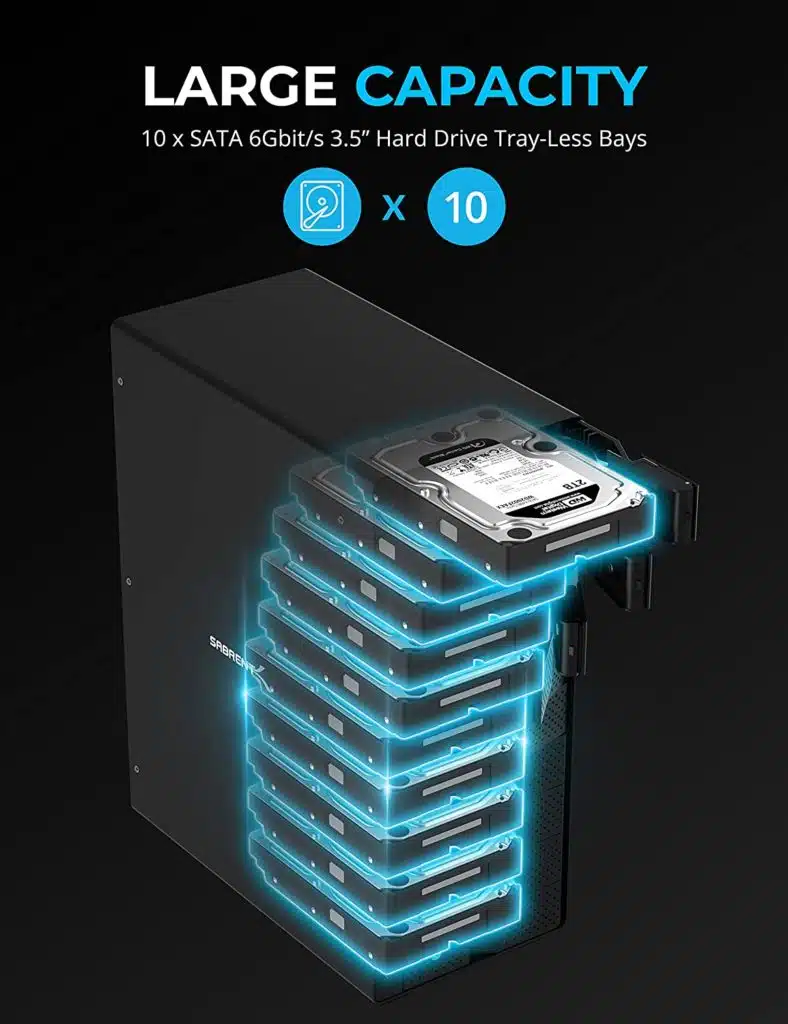
SABRENT 10-Bay 3.5” SATA Hard Drive Tray-Less Docking Station (USB 3.2 Type-C and Type-A) (DS-UCTB) (Amazon)
This SABRENT SATA Hard Drive Tray-Less Docking Station enables you to access 3.5″ hard drives, without the frustration of assembling enclosures. By inserting a 3.5″ SATA hard drive directly into this docking station, you can quickly access drive contents and transfer files. Transfer data quickly and easily through USB 3.2 at speeds up to 10Gbps.
